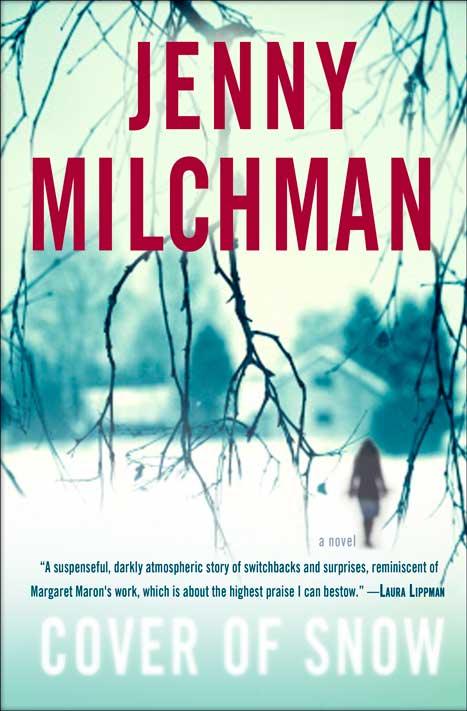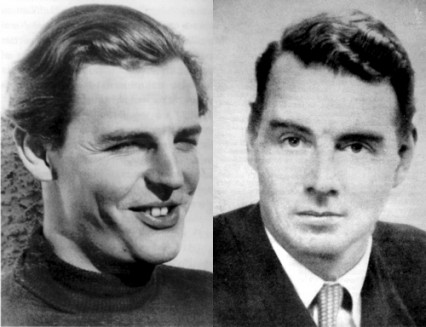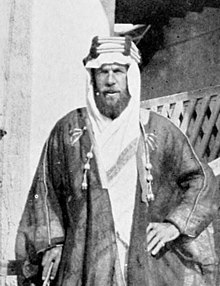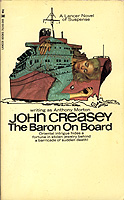

After several months of arduous sea travel, the sailing ship
Mayflower, filled with pilgrims looking for a new way of life, found its way into Plymouth harbor. This was in the cold November of 1620, and there was an even colder winter ahead. These hardy souls spent the next few months huddled in the holds of the ship, losing more than half of their members before the spring came. The few that were left made their way onto land and began making themselves a new colony. When they were at their most vulnerable, they met with strangers from the local people who aided them in putting down roots.
“Who ever you are, I have always depended on the kindness of strangers,” said Blanche DuBois in
A Streetcar Named Desire, by Tennessee Williams, when she was at a desperate point in her life.

Several of my favorite characters owe their current
existence to the kindness of strangers. One of these I have been following for
about 15 years. This is the unusual character Kathy Mallory, who debuted in
Mallory’s Oracle by Carol O'Connell. Kathy was a waif of about 10 or 11, living on the streets with razor blades in her pockets for protection, keeping on the run from the victims she robbed to stay alive and finding safe places to sleep. She had the face of an angel and a heart that was growing harder by the day. Then a kindly cop, Lou Markowitz, and his loving wife, who gave her a home and unconditional love, rescued her.
Over the course of the series, Kathy morphs to Mallory and enters the police herself. The reader gets to see Mallory mostly through the eyes of all those who care for her, but she essentially is a mystery that is slowly revealed over all the books. There are her partner, Riker, her boss, Coffey, her friend, Charles, and several of Markowitz's poker buddies––whom she used to fleece regularly. They all have specific thoughts about what kind of person Mallory is, but the reader knows that they all have it a bit wrong.

In
The Chalk Girl, O'Connell’s terrific book that was published by Putnam early this year, Mallory is back at the NYPD after a three-month hiatus, which she spent driving around the country. Her boss, Lt.
Coffey, has kept her deskbound in her time-out corner until the day the rampaging
rats ran in Central Park. There have always been rats in the park, and the animal and the human vermin types abound there, but on this day, due to unusual circumstances, they are moving en masse through a particular part of the park––the Ramble––and
they are delighted to find several dead bodies to augment their frenzy.
Among all the frightened, running, screaming populace at the park, there is a small red-haired child who looks like a sprite, wandering around trying to find someone to help her. But she is filthy, smelly, maybe bloody, and even grown-up people back away from her. Finally, amid all the mayhem and murder, Mallory is released from her constraints to help find the girl, because if there is one thing she knows, it is being young, alone and frightened. There are a few other reports about this child coming in. She appears to be unusually affectionate and is running up to people with arms outstretched as if looking for a hug. When Mallory finds her, she is the first to open her arms and gather the rather disreputable child to her chest. This seems to be quite a departure for the usually pristine detective, but it was not the surprise to me that it was to Mallory's fellow police officers.

The little girl's name is Coco, and she has been looking for her uncle Ben. She says that he has turned into a tree and it turns out that he is indeed suspended by ropes to a tree––and he is not quite dead. Coco is a remarkable child with distinct qualities and Mallory knows that the little girl will be a good witness to help solve this incident and the cases of other similar hanging victims who had been left to die gruesomely. Mallory's friend, Charles Butler, who is a psychologist, is much more worried about the child's state of mind.
Ben is hospitalized in critical condition, his body shut down due to his ordeal, and while there the police guard him. It was a nice change of cliché when the astute policeman at the door of the hospital room is never caught napping or on break when unwanted and possibly dangerous visitors show up. But Ben was not long for this world and though the police are looking for what tied these victims together, Mallory looks for a money angle because she believes it's the motive for most murders.

The story moves along at an exciting pace, as pieces of the past intersect with bits of the present. The pictures of the crime change like the inside view of a kaleidoscope, with all the little facets falling into different patterns as the case moves along. The people involved are among the wealthy––and among the drug-ridden––as well as people in authority. The images become clear and the accounts are melded beautifully and then balanced.
Mallory's relationship with Coco is very revealing and I am sure that many have interpreted it in different ways as did the people who considered they knew her. My take is that it began as the kindness of a stranger who could be depended upon and then turned deeper than that.
Two other series come to mind that reflect this theme. One is Elizabeth Gunn's, about an aptly-named Jake Hines, a man of many bloodlines. Jake began his unpretentious
life in a dumpster, found by a pot-smoking janitor, who took him to a motel clerk, who promptly wiped the coffee grounds out of his eyes and called Health and Human Services. He owed his childhood to the foster parents of Minnesota, and it wasn't until he was a little older that he was a little grateful because he knew that other places were a lot worse. Jake is now the newly appointed Chief of Detectives for the town of Rutherford, Minnesota.
These are fast-paced police procedurals with an excellent cast of characters, who work well as a team. This is somewhat reminiscent of Dell Shannon's Lt. Luis Mendoza, albeit in a scaled-down town. I am drawn to the dermatologist/coroner who
learned English while he was on the run from a work camp in the Soviet Union. He is hard to surprise, because murderers supervised his adolescence.

In Nury Vittachi's series that begins with
The Feng Shui Detective, we meet Mr. C. F. Wong, a Feng Shui master who takes on a world-weary cast-adrift 17-year-old Joyce McQuinnie. Wong, living in Singapore, speaks English, but he considers Joyce's to be speaking a bizarre and incomprehensible sub-dialect of the language. It had taken him a while to learn that her term for
no was "As if" and it was another breakthrough to find that "What ever" meant
yes.
The adventures of these two are always humorous and both parties benefit from the kindness of a stranger.
At Thanksgiving, many people donate their time collecting and delivering food to worthy families, and many take time from their own plans to serve in soup kitchens. My hat is off to all the strangers who can be depended on for acts of kindness at this time of year.
Note: I have reviewed or will post reviews of some of these books on Amazon, Goodreads and other sites under my user names there.


















































